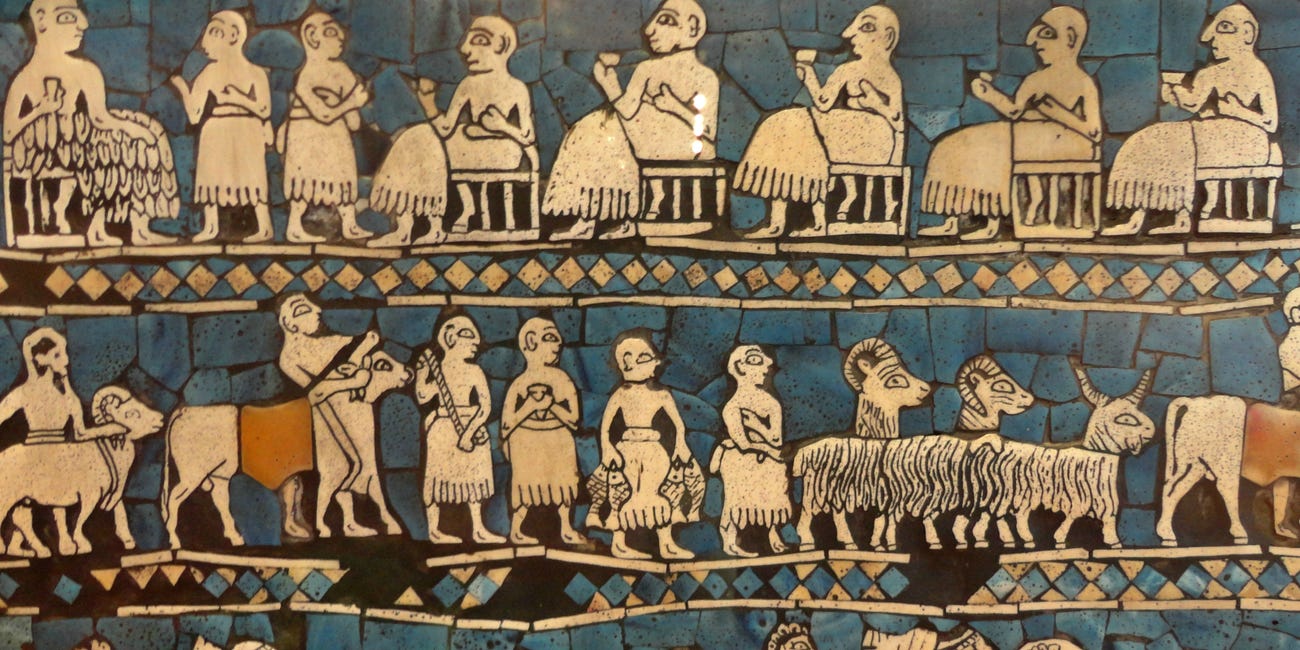An ideal introduction to our greatest economic transition
Review of Neolithic by Susan McCarter
This is one of those books that can open the reader's eyes onto a massively important era in human development. The neolithic age began approximately 10,000 years ago, marking the end of the hunter-gatherer societies that had reigned since the dawn of humanity, some 2 million years ago. The change was absolutely immense, in that humans began to raise their own food, became sedentary, and developed in outline the societies that have survived to the current day.
In McCarter's hands, we gain an overview of the major areas of this transformation. She writes as a scientist who can address a popular audience, at the undergraduate level. While avoiding long debates or esoteric descriptions of significant artifacts, she goes over the essentials in a level of detail and complexity that keeps the reader going, indeed, that whets the appetite for seeking more – the surest sign of success in any reading experience. Every single page is chock full of ideas and descriptions that add to a comprehensive view of the age.
The book is divided into digestible sections, beginning with a description of the scientific tools, from carbon dating through mendelian genetics and many techniques. While a bit brief, it makes for a dense introduction. She then addresses topics, including pottery, art, trade, society, architecture and concludes with a discussion on why the transition took place – interestingly, she refuses to sound definitive when the science will not support the conclusion. In each instance, she discusses with exceptional clarity the method employed to reach her conclusions, the reasons that past ideas were rejected, and the areas of continuing controversy. Finally, she respects the reader by holding to what can be scientifically known – she avoids facile generalizations or the tendentious junk interpretations that infect such popular sources as Wired magazine.
What can be definitively analyzed in endlessly fascinating. For example, the domestication of animals led to fundamental adaptations in their appearance and behavior. The wolf was quickly inserted into west Asian settlements, often so altered that they have been judged as separate species; the same is true for pigs, cows, goats, and sheep. The mechanism for this change surprised me: it was via neotany, according to which offspring adopt genetic characteristics from a younger stage of development than those of their parents: shorter snouts, less dangerous horns, less sharp teeth, different brain capacity, etc. The animals apparently adapted from a combination of breeding, environmental pressure, and perhaps even human expectation. However, the animals were chosen for their compatibility in such areas as acceptance of hierarchical masters (human or their own kind), the ability to live in close quarters, etc. This will forever spark my imagination as I read about economics or study other societies. The author accomplishes the same thing in all the areas she addresses.
Perhaps most fascinating, many of her conclusions are stunningly counter-intuitive. The adoption of farming methods, for example, led to a decline of human health: life expectancy dropped, height diminished, new diseases appeared (both epidemic within urban agglomerations and from repetitive farm labor); indeed, the appearance of dental caries is taken as a sign of farm-based economies: higher levels of carbohydrate diets meant increased acid levels in the mouth, hence less resistance to oral bacteria, leading to dental cavities. In addition, genuine social hierarchies appeared, which means that the overwhelming majority of human history was lived in egalitarian hunter-gatherer societies. Does that mean, I wonder, if humans existed naturally as socialists? Does this contradict the views that evolutionary psychologists are presenting (crudely put that hierarchy naturally reflects genetic superiority)? This is wonderful intellectual food.
It is truly rare that I find a book this stimulating. The wonder that it evokes is priceless: while expensive and short, this was an absolutely wonderful reading experience. The author's style is also clear and concise, without flourish. There are ample illustrations as well, all adding to the text. It is a true gem and I hope the author produces more: this is popular science at its best.
Related reviews:
Geography as a factor in the emergence of civilization
Because I had heard that this book was an extended attempt to reduce the whole of human civilization to geography, I was wary of it being a long and dreary exercise in simplistic determinism. I could not have been more wrong! Not only is this book an absolutely first-rate intellectual adventure, but it is a nuanced interpretation that deserves every eff…
Review of Before the Dawn: Recovering the Lost History of Our Ancestors by Nicholas Wade
I was wary when I started this book, suspecting that it would superficially reduce everything to genetics, that silly extreme. Instead, I am delighted to report, genetics is not advanced as the principal explanation: Wade systematically goes through the twin disciplines of archaeology and linguistics, employing genetics and Darwinian evolutionary reason…
Review of After the Ice - A Global Human History, 20,000–5000 BC by Steven Mithen
I started reading this with some trepidation, not only because the ideas and prose are extremely dense, but I distrusted the narrative device of a fictional time-traveling observer. However, once I got used to the style, I was totally mesmerized by the author's clarity and brilliant expositions of arcane archeology and what we can know about it from 20,…


